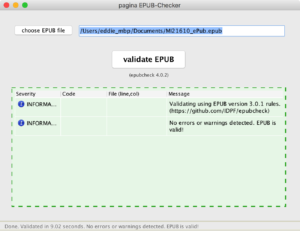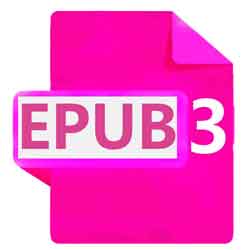

In the meantime, there was a very important development: the IDPF became part of the W3C, and the W3C took responsibility for ePub. Not being able to validate ePub 3.1s was a deal breaker. An ePub has to be valid or they won’t accept it-which means that publishers and their vendors also depend on ePubCheck.

#EPUB CHECKER FOR EPUB3 SOFTWARE#
And if the recipients of ePubs didn’t accept ePub 3.1, publishers and their vendors weren’t going to make them.Īnother obstacle was that ePubCheck, the software that ensures that an ePub is valid, was never updated to validate ePub 3.1s. Understandably, recipients were reluctant to change their systems to support both versions. One reason was that, although ePub 3.1 was actually much clearer and better organized, and made some significant technical improvements, there were features in it that weren’t backward compatible with ePub 3.0/3.0.1. ePub 3.0 came out in 2011 and was subsequently refined a bit as ePub 3.0.1, which didn’t make existing ePub 3.0s obsolete.īut a couple of years ago, when ePub was still governed by the IDPF, the ePub 3.1 spec was issued. And ePub 3 is designed from the get-go to be made accessible. (A famous book by Joseph Heller comes to mind.) Neither the vendors nor the recipients want to maintain two systems, two workflows.ĮPub 3 is much better aligned with web technologies and W3C standards, so ePub 3s are more futureproof than ePub 2s. Vendors only keep producing ePub 2s because publishers ask them to (or never bother to ask for ePub 3), and retailers and aggregators keep accepting ePub 2s because publishers keep sending them. It’s likely that all the partners that make or receive a publisher’s ePubs not only accept ePub 3 but prefer it.


 0 kommentar(er)
0 kommentar(er)
